Is it possible to eat carrots with pancreatitis and in what form?
A mandatory method of complex treatment of pancreatitis is a therapeutic diet. Against this background, other therapeutic measures are carried out. A properly organized diet normalizes metabolism, prevents the progression of the disease, relapses and possible complications. The list of permitted products is adjusted depending on the stage of the disease and the severity of symptoms.
Such a common and popular vegetable as carrots is beneficial for the pancreas and the body as a whole. It copes with digestive problems, saturates the body with micro- and macroelements, vitamins, cleanses the intestines, and supports the physiological functions of the gastrointestinal tract. From the article you will learn whether carrots are okay or not for pancreatitis, how they act on the pancreas, and what foods are recommended to eat during remission of the disease.
Chemical composition of carrots
Carrots have a low calorie content - 41 kcal raw and 35 kcal after heat treatment, contain virtually no fat (0.1 g), but are rich in healthy carbohydrates (6.9 g) and proteins (1.3 g).
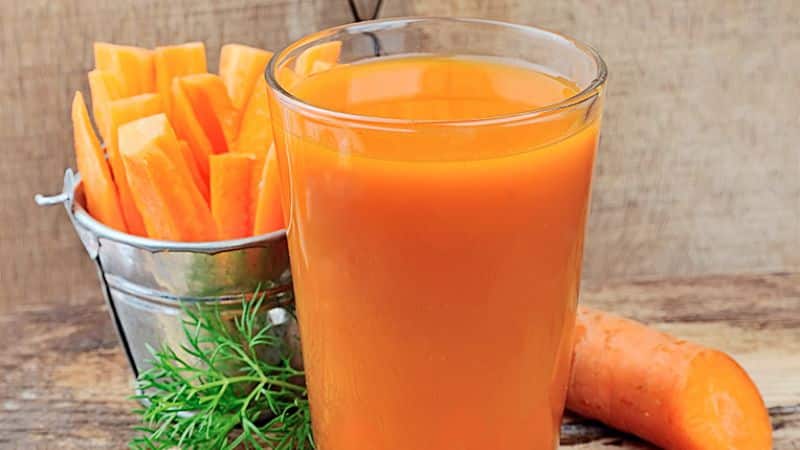
The composition contains all the substances necessary for the human body:
- amino acids;
- alimentary fiber;
- organic acids;
- starch;
- macroelements - potassium, calcium, sodium, magnesium, silicon, sulfur, chlorine, phosphorus;
- trace elements - iron, cobalt, iodine, manganese, molybdenum, copper, selenium, fluorine, zinc, chromium.
Carrots are superior to other vegetables in terms of vitamin A content: 100 g - 240% of the daily value.It is also a valuable source of ascorbic and nicotinic acids, vitamins E, H, K. Orange fruits are valued for their content of B vitamins: thiamine, riboflavin, niacin, choline, pyridoxine, pantothenic acid, folate.
Nutritionists, if possible, advise including carrots in the diet of healthy people every day. It contains high concentrations of beta-carotene. This element performs a number of important functions:
- slows down the aging process;
- protects against influenza and upper respiratory tract infections;
- maintains the health and condition of the skin and mucous membranes;
- has a positive effect on redox processes;
- takes part in the metabolism of proteins, fats, carbohydrates;
- increases resistance to intestinal diseases;
- strengthens the immune system;
- supports normal metabolism;
- ensures proper functioning of the sebaceous and sweat glands;
- maintains healthy teeth and bones;
- Maintains eye hydration and protects against drying out.
Carrots prevent the development of cardiovascular diseases. B vitamins and ascorbic acid increase the density and elasticity of vascular walls and small capillaries, reduce the level of bad cholesterol, and regulate blood glucose levels.
Potassium and magnesium ensure proper functioning of the heart muscle, improve the conduction of nerve impulses, copper is involved in hematopoiesis, and selenium stimulates the formation of red blood cells. As a result, the risk of formation of atherosclerotic plaques is reduced, normal blood flow is maintained, and the development of ischemia, stroke, hypertension, and diabetes is prevented.
Beneficial properties of carrots for the pancreas
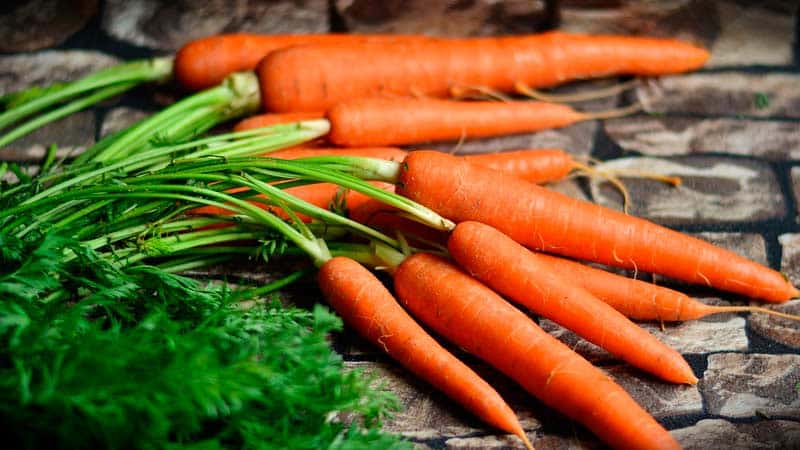
It is difficult to overestimate the importance of carrots for the digestive system. Regular consumption of vegetables restores and supports the functioning of the pancreas. A sufficient amount of fiber promotes the active removal of various types of waste and toxins from the body, eliminates excess sugar, bad cholesterol and other harmful substances.
The role of carrots in restoring and maintaining water-electrolyte balance, improving digestion, and normalizing metabolism has been proven. The vegetable has an anti-inflammatory effect, protects mucous membranes from the influence of irritating factors, reduces the intensity of pain and other symptoms.
How do carrots affect the pancreas?
The beneficial properties of carrots for the pancreas are determined by the period of the disease. People at high risk of developing pancreatitis are recommended to consume the vegetable as a preventive measure.
During an exacerbation of pancreatitis
During the period of acute pancreatitis, with pronounced clinical signs, a strict diet is indicated. For the first 2-3 days, doctors recommend completely abstaining from food, drinking only still water, rosehip infusion, and herbal tea without sugar. This relieves the affected organ.
As soon as possible, the patient is transferred to a nutritious diet. Starting from 3-4 days, carrots, like other foods, are allowed to be eaten. They provide a gentle regime; the menu includes dishes with a semi-viscous, liquid and semi-liquid consistency. Carrots are boiled or baked, steam pudding, puree, soufflé, and cutlets are prepared.
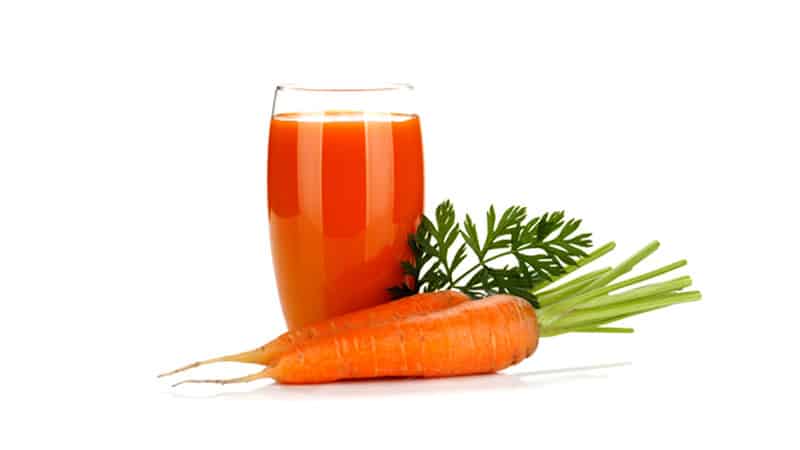
During remission
During the period of remission, the patient is transferred to full-fledged balanced diet. The diet includes carrots and carrot juice. They are combined with grains, vegetables and fruits, pre-heat-treated, and consumed without oil or salt.Fried carrots, which have a high calorie content, are excluded from the menu.
Can I drink carrot juice? Yes, but it is better to mix it with other vegetable drinks. Start taking small doses - 100 ml, gradually increasing the portion to 400-500 ml per day or 200 ml at a time.
Reference. Excess carrots in the diet will cause bloating, increased gas, cramping, constipation and diarrhea.
Carrots for chronic pancreatitis
Chronic pancreatitis allows the consumption of thermally processed vegetables. Raw carrots are heavy on the stomach and take a long time to digest; boiled or stewed carrots are easier to digest. It has lower calorie content, but the content of phenols and antioxidants increases, which resist many diseases and ensure proper functioning of the digestive system.
This is interesting:
Is it possible to eat watermelon with cholecystitis and pancreatitis?
Recipes for eating carrots for pancreatitis
A huge number of dishes are prepared from carrots, since they are combined with meat, fruits and vegetables, giving them piquancy and enhancing the taste. Try to reduce your calories. For example, it is better to bake pancakes and cutlets in the oven without oil. It is better to cook casseroles and muffins with kefir, and where wheat flour is required, use oatmeal, buckwheat, and corn.
Below are recipes that are suitable as therapeutic nutrition for pancreatitis.
Carrot puree
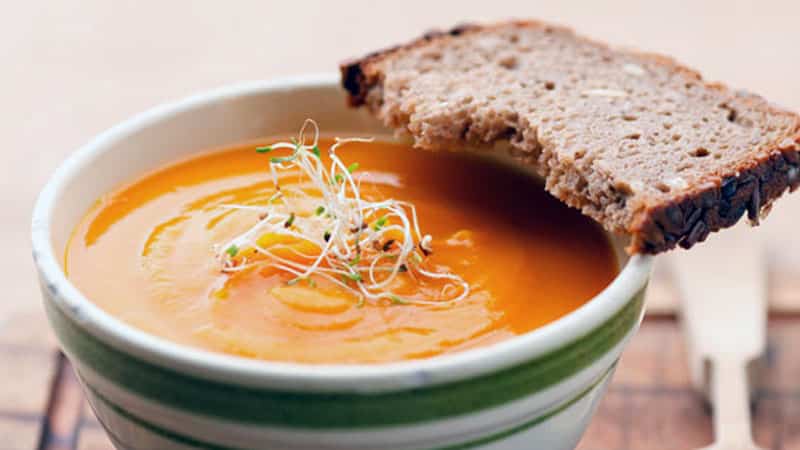
Ingredients for two servings:
- boiled carrots - 2 pcs.;
- milk - 100 ml;
- butter - 10 g.
How to prepare carrot puree for pancreatitis:
- Peel the carrots and boil until soft. Cook for an average of 20-30 minutes. Drain the water and cool the fruits.
- Grind the vegetables in a blender until pureed. Pour in milk and melted butter. Mix.
If desired, add other vegetables to the puree, for example, cauliflower, broccoli, potatoes, beets, and replace the milk with low-fat sour cream and cream.
Juice
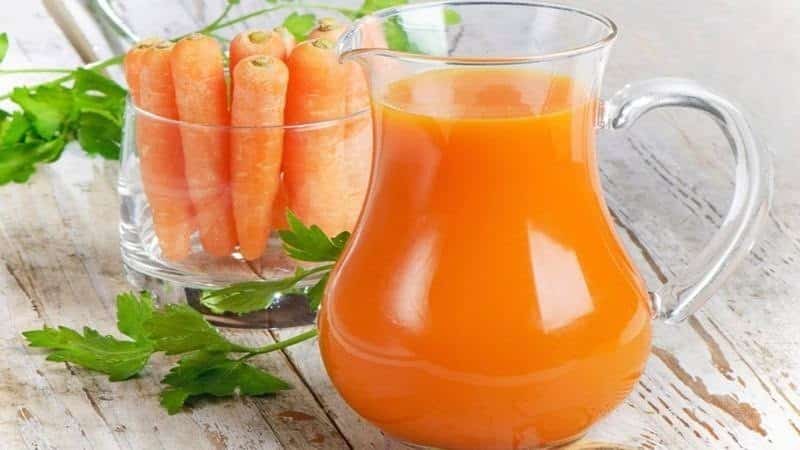
Carrots go well with other foods. It is mixed with various vegetable or fruit juices prepared at home. Apple, orange, tangerine, pomegranate, pumpkin, cucumber, beet juice and others are suitable.
Preparing carrot juice for pancreatitis is simple: peel two medium carrots, cut into portions, and pass through a juicer. Add cream if desired.
Advice. If there is no juicer, a blender or grater will replace it. Chop the carrots, place in gauze folded in several layers, squeeze out the juice.
Cutlets
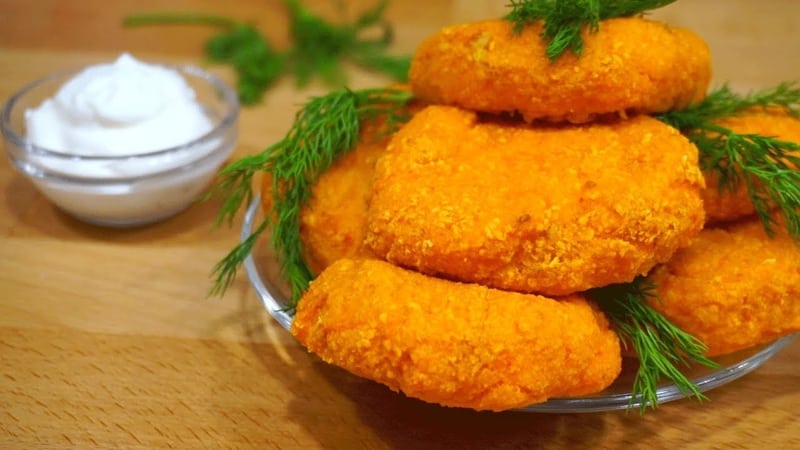
Products:
- carrots - 500 g;
- wheat bran - 3 tbsp. l.;
- semolina - 2 tbsp. l.;
- lemon zest;
- lemon juice - 2 tbsp. l.;
- vegetable oil - 1 tbsp. l.;
- salt to taste;
- cinnamon on the tip of a knife;
- water.
How to cook carrot cutlets:
- Grate the peeled carrots.
- Heat vegetable oil in a saucepan and sauté until half cooked adding water.
- Add cinnamon, salt, lemon zest, semolina and bran, lemon juice to the carrots. Mix all products well. With wet hands, form cutlets.
- Cover a baking sheet with parchment. Place the cutlets. Cook in a preheated oven for 15 minutes at 200°C.
Cream soup
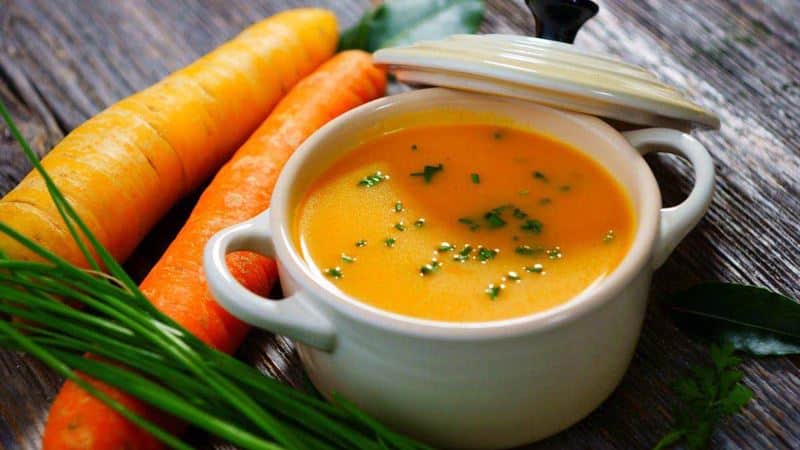
Ingredients:
- carrot;
- onion;
- ginger;
- orange zest;
- butter;
- salt and pepper;
- greenery.
Recipe:
- Peel the carrots and onions and cut into medium-sized cubes. Place in a saucepan and simmer with water.
- Add the zest of one orange and a small piece of ginger into separately cooked low-fat chicken broth or just boiling water to give the soup a unique aroma.
- When the ginger and zest boil a little, remove them.
- Cook the onion-carrot mixture in the broth until soft.
- Place the vegetables in a blender, chop, transfer to a clean saucepan, gradually add broth to the desired consistency.
- Add salt and pepper to taste, add a piece of butter. Serve with greens.
Carrot cake
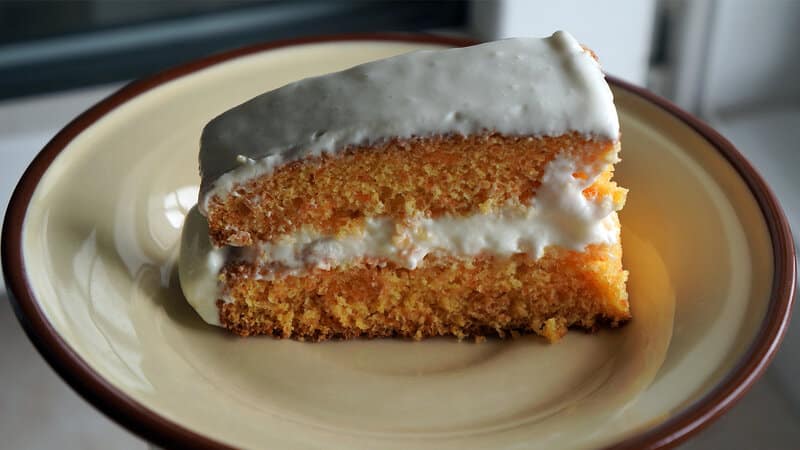
Products:
- carrots - 2 pcs. medium size;
- oatmeal (or any other - wheat, corn) - 50 g;
- oatmeal - 1 tbsp.;
- milk - 200 ml;
- chicken egg - 4 pcs.;
- salt - ½ tsp;
- baking powder - 1 tsp;
- vanillin or vanilla sugar;
- butter for greasing the mold.
How to make diet carrot cake:
- Pour warm milk over the oatmeal so that it swells.
- Peel the carrots and grate them on a fine grater.
- Beat the cooled eggs with a mixer along with salt and vanilla sugar.
- Add oatmeal and carrots, mix everything well. Add baking powder and flour.
- Grease a baking dish with butter, pour the mixture into the pan, and level it out.
- Bake in a preheated oven for 50 minutes. at a temperature of 180°C. When the cake has cooled, remove it from the pan.
Boiled carrot salad
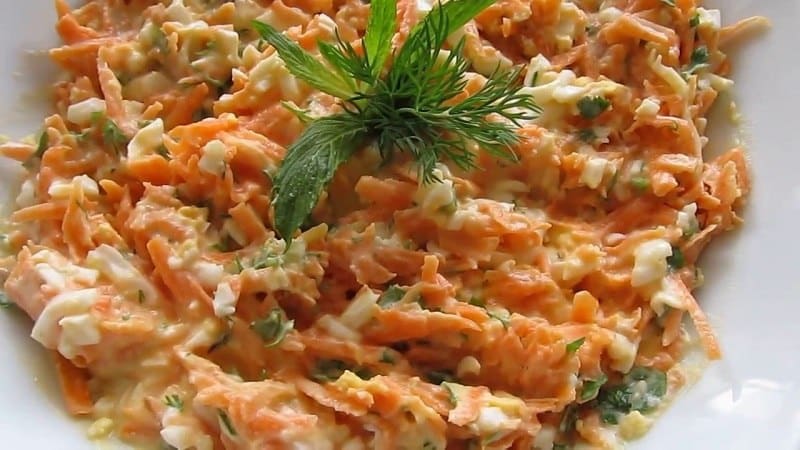
Ingredients:
- boiled carrots;
- vegetable oil;
- lemon juice;
- garlic;
- greens - dill and parsley.
How to make carrot salad:
- Boil the carrots until soft with the addition of a few cloves of garlic. Cool.
- Peel the boiled vegetable and cut into medium-sized cubes. Add butter, lemon juice, salt, finely chopped herbs. Mix all ingredients.
- The salad needs to sit. Serve cold.
Possible harm and contraindications
Carrots are contraindicated for kidney and liver diseases, large stones in the urinary system, gastrointestinal pathologies in the acute stage, allergies.
A raw food diet creates an unusual load on the organs of the gastrointestinal tract, especially if there are chronic diseases. In people with allergies, the vegetable causes a skin rash, peeling, and itching.
Excess beta-carotene provokes exacerbation of symptoms of pancreatitis and cholelithiasis, vomiting and nausea, drowsiness, lethargy, and headache.
Read also:
Is it possible to eat buckwheat if you have pancreatitis?
How to properly use oats for pancreatitis and how they are useful.
Is it possible to eat melon if you have pancreatitis of the pancreas?
Conclusion
Raw carrots for pancreatitis are not the best nutrition option. It takes a long time to digest and creates additional stress, so it is better to minimize its use. Another thing is stewed, boiled, baked carrots. In this form, it will be “pleasant” to the stomach and will benefit the digestive system and the body as a whole.